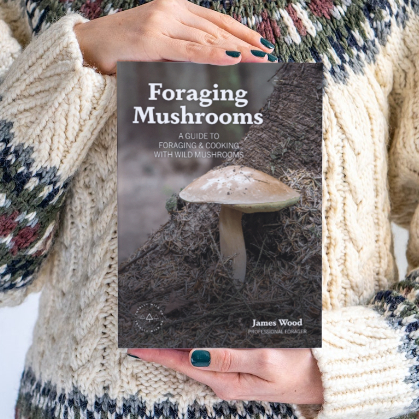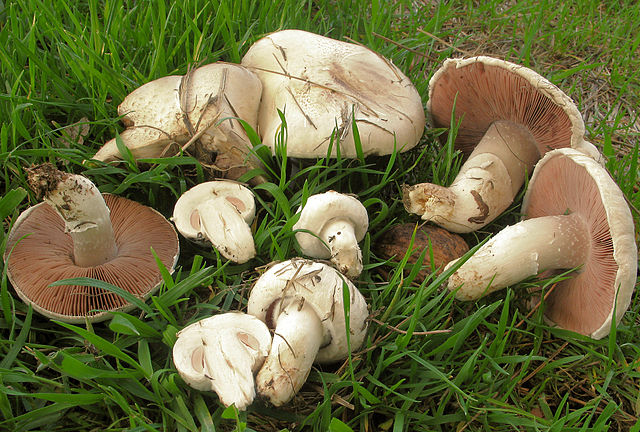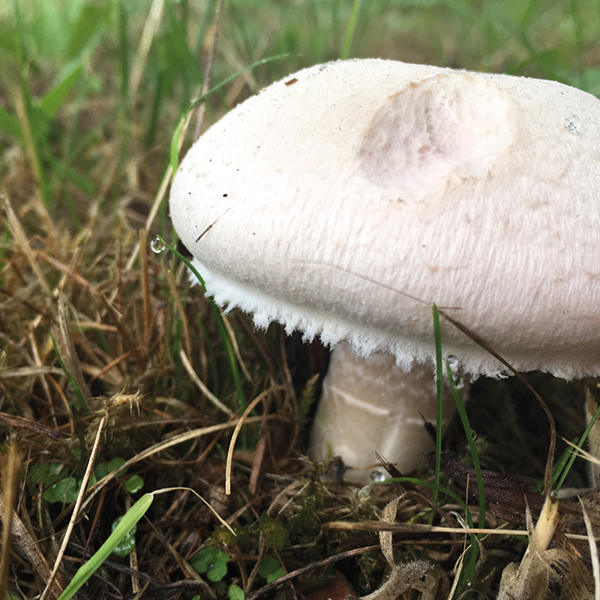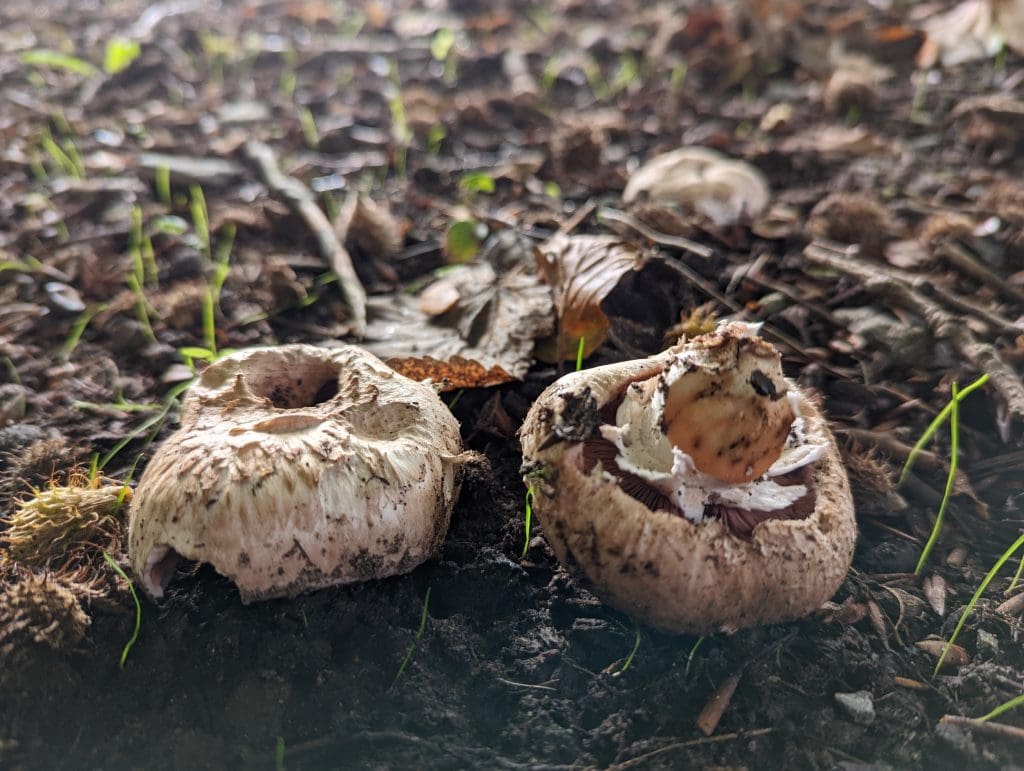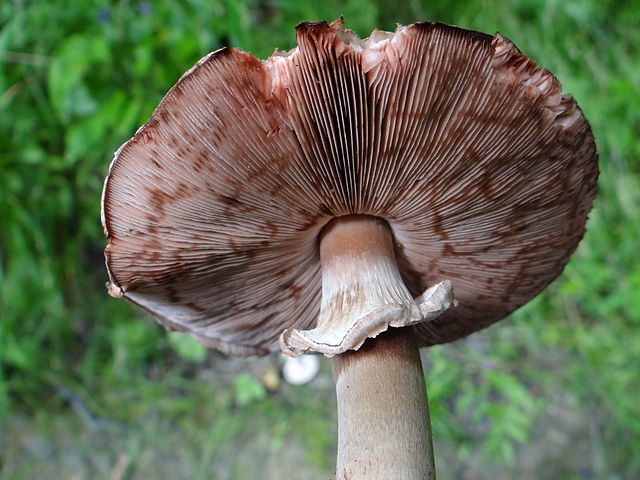Welcome to the wonderful world of wild Agaricus mushrooms!
If you’re a fan of foraging and exploring the bounties of nature, then you’re in for a treat. The Agaricus family, also known as field mushrooms, is a diverse and fascinating group of fungi that can be found in various habitats around the world.
In this comprehensive guide, we will delve into the key features of Agaricus mushrooms, learn how to identify the most common species, discuss their edibility and potential lookalikes, and even explore some delicious recipes. Before you pack up your dreams of enjoying freshly foraged mushrooms on toast we have some handy tips that can help you develop your understanding of mushrooms in an easy and simple way, and bring those wild, hot, buttery dreams into reality.
Listen to Our Agaricus Mushrooms Podcast
This is an ai generated podcast that we’re sharing because our team have genuinely found it useful
Exploring the Agaricus Mushrooms Family
The Agaricus family, scientifically known as Agaricaceae, belongs to the order Agaricales within the phylum Basidiomycota. These mushrooms are terrestrial saprobes, meaning they obtain nutrients by breaking down decaying organic matter in the soil.
Unlike some other mushroom families, Agaricus mushrooms are not known for their bright and vibrant colors. Instead, their caps are usually white, gray, or brown, and they often have distinctive dark brown gills. One interesting feature of Agaricus species is that the stem cleanly breaks away from the cap, which is a characteristic you may have noticed when cleaning store-bought button mushrooms which are also one of the Agaricus Mushrooms (Agaricus bisporus).
Agaricus mushrooms often also possess a partial veil, a thin membrane that covers the gills when the mushroom is young. As the mushroom matures, the partial veil often forms a ring on the stem. Another important characteristic to note is the spore print, which is the color of the spores when they are released from the gills. In the case of agaricus mushrooms, the spore print is typically dark brown, matching the color of the mature gills.
To gain a deeper understanding of the Agaricus family and its many species, it is essential to consult expert resources.
It is important to note that new species are continually being discovered, and the identification of Agaricus mushrooms can range from relatively easy to quite challenging. Even experienced mycologists often find themselves saying, “this specimen is very close to…” rather than providing a definitive identification.
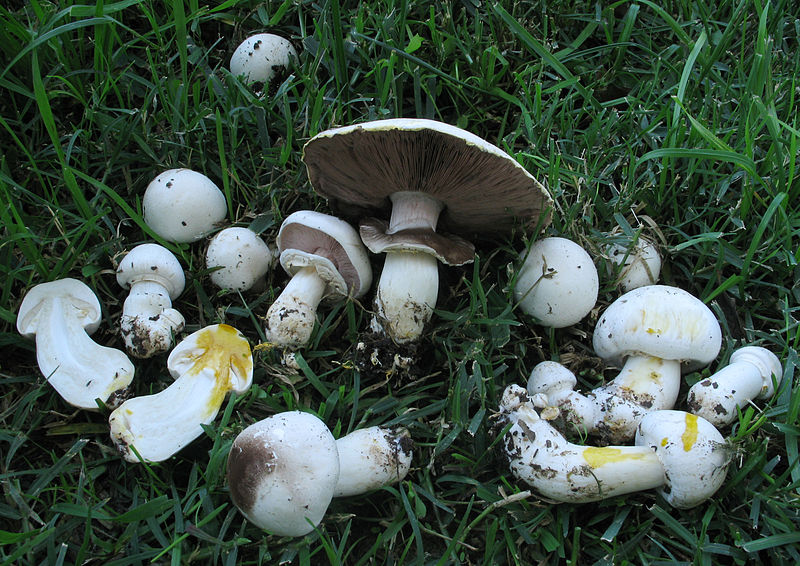
Important Identification Characteristics of Agaricus Mushrooms
Identifying agaricus mushrooms requires careful observation of various morphological features. While it may not be possible to identify every Agaricus collection with absolute certainty, paying attention to the following characteristics can greatly assist in the identification process:
- Habitat: Most Agaricus species are found either in woodland settings or grassy areas without nearby trees. However, some species have been observed in urban settings near planted trees, although they do not form a mycorrhizal relationship with them. Taking note of the surrounding trees can provide important clues for identification.
- Standard Morphological Features: Dimensions, shapes, colors, and textures are informative in Agaricus identification. While gill attachment and spacing may not be crucial, the color of the spore print can be helpful.
- Bruising and Staining: Agaricus mushrooms can exhibit color changes when bruised or sliced. Rubbing the cap along the margin with your thumb may cause the surface to change color, usually to shades of yellow or red. Slicing the mushroom in half may reveal color changes in the flesh, especially near the base of the stem.
- Odors: The odor of an agaricus mushroom can be a significant identification feature. However, individual olfactory abilities can vary, and not everyone can detect the full range of odors. The main distinctive Agaricus odors are often described as “phenolic” or “almond-like.” Crushing the flesh in the base of the stem is the best way to assess the odor.
- Chemical Reactions: Applying various chemicals to the mushroom’s surfaces can produce distinctive color changes. Potassium hydroxide (KOH) in a 2% or stronger solution is commonly used. Reactions to KOH can range from no change to yellow or even orange in some cases.
- Dried Specimens: Certain Agaricus species in section Arvenses acquire a distinct appearance when dried, turning orangish yellow instead of white or brown. This characteristic can aid in identification.
- Spores: Microscopic examination of spores can be essential in agaricus identification. Sporal dimensions and morphology, measured precisely, can indicate species differences.
- Cheilocystidia: Examining cheilocystidia (specialized cells on the gill edge) is occasionally necessary for accurate identification. This process can be challenging due to collapsed cheilocystidia and the difficulty of distinguishing between cheilocystidia and basidioles. However, careful observation and analysis can provide valuable insights.
Following a Spore Flow Chart to Agaricus Mushrooms
In our book: Foraging Mushrooms, you can follow our different spore flow charts to help in identifying mushroom families by following the questions and answers written within the flow chart. Below I’ll outline the steps for Agaricus Mushrooms.
- Does the mushroom have a cap, stem, and gills – ANSWER = YES
- What is the spore colour – ANSWER = DARK BROWN TO PURPLE
- Is the cap shaggy looking, tall and white (often looking like a lawyers wig) – ANSWER – NO
- Are the Gills very Deccurent? – ANSWER – NO
- Is the Cap like a concertina and liquefying with age? – ANSWER – NO
- Are the Gills Free with a Ring on the Stem? ANSWER – YES
Agaricus (Field Mushrooms) Head to page 28
The Keys to Common Agaricus Mushrooms
Now that we have covered the important identification characters for agaricus mushrooms, let’s dive into the top 6 most common species you may encounter during your foraging adventures. We will discuss their key features, edibility, and potential lookalikes, and provide tips on how to distinguish them from similar species.
- Agaricus bisporus: Commonly known as the button mushroom, this species is a staple in the culinary world. Its cap is initially white but can turn brown with age. The gills are free from the stem, and the flesh does not bruise or stain significantly. Button mushrooms are widely cultivated and can be found in grocery stores year-round.
- Agaricus campestris: Also known as the field mushroom, this species is a favorite among foragers. It has a white or pale gray cap that gradually expands and flattens with age. The gills start off pink and mature to dark brown. Field mushrooms have a pleasant, almond-like odor and are prized for their culinary qualities.

This image was created by user Byrain at Mushroom Observer, a source for mycological images. - Agaricus arvensis: The horse mushroom is a large agaricus species with a white to pale cream cap. It has free gills that start off pink and darken to dark brown. The stem is relatively thick and often has a ring. Horse mushrooms are edible and highly sought after by foragers.

- Agaricus augustus: This species, commonly known as the prince mushroom, is a true delicacy. It has a reddish-brown cap that becomes more caramel-colored with age. The gills are initially pink and turn dark brown. The stem is thick, often with a prominent ring. Prince mushrooms have a delightful almond-like scent and are highly valued by mushroom enthusiasts.

- Agaricus silvicola: Also known as the wood mushroom, this species has a brownish-gray cap and dark brown gills. It is typically found in woodland settings and is edible. However, it is important to note that certain agaricus species have toxic lookalikes, so proper identification is crucial.

Jerzy Opioła, CC BY-SA 3.0 , via Wikimedia Commons - Agaricus xanthodermus: The yellow-staining mushroom is an intriguing agaricus species with a white cap that bruises bright yellow when handled or damaged. Its gills are initially white and turn pink, then dark brown. The stem also stains yellow when bruised. However, caution must be exercised when consuming this species, as it contains toxins that can cause gastrointestinal distress in some individuals.

This image was created by user Byrain at Mushroom Observer, a source for mycological images.
Here are our favourite Recipes with Agaricus Mushrooms
After exploring the fascinating world of agaricus mushrooms and learning how to identify the most common species, it’s time to put your foraged treasures to good use.
Here are two delicious recipes that showcase the unique flavors of agaricus mushrooms:
Creamy Agaricus Mushroom Soup
Ingredients:
- 500g agaricus mushrooms, sliced
- 1 onion, chopped
- 2 cloves of garlic, minced
- 2 tablespoons butter
- 4 cups vegetable stock
- 1 cup heavy cream
- Salt and pepper to taste
- Fresh parsley for garnish
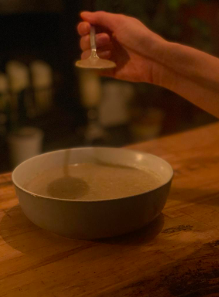
Instructions:
- In a large pan, melt the butter over medium heat. Add the chopped onion and minced garlic, and sauté until fragrant and translucent.
- Add the sliced Agaricus mushrooms to the pan and cook until they release their moisture and start to brown slightly.
- Pour in the vegetable stock and bring the mixture to a boil. Reduce the heat and let it simmer for about 15 minutes to allow the flavors to meld together.
- Using a stick blender or a regular blender, puree the soup until smooth and creamy.
- Return the soup to the pot and stir in the heavy cream.
- Season with salt and pepper to taste.
- Simmer the soup for an additional 5 minutes to heat through.
- Ladle the creamy agaricus mushroom soup into bowls and garnish with fresh parsley.
- Serve hot and enjoy the comforting flavors of this delightful mushroom soup.
Agaricus Mushroom and Spinach Risotto
Ingredients:
- 1 cup Arborio rice
- 500g agaricus mushrooms, sliced
- 2 cups vegetable stock
- 200ml white wine
- 1 onion, finely chopped
- 2 cloves of garlic, minced
- 2 cups fresh spinach leaves
- 1/2 cup grated Parmesan cheese
- 2 tablespoons butter
- Salt and pepper to taste
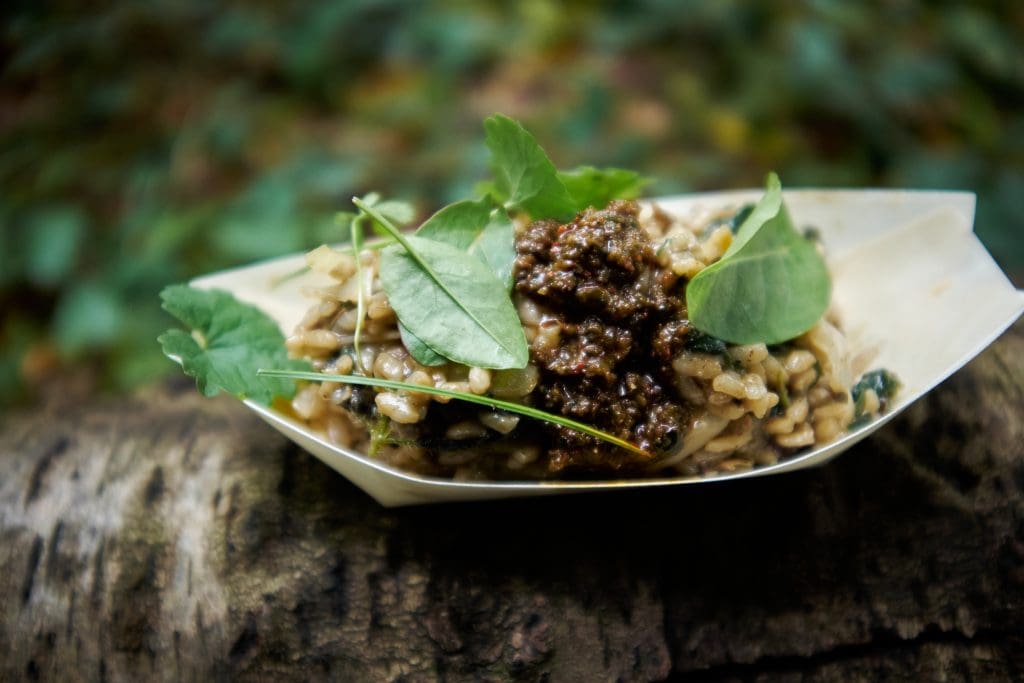
Instructions:
- In a large saucepan, melt the butter over medium heat. Add the chopped onion and minced garlic, and sauté until softened.
- Add the Arborio rice to the saucepan and stir to coat it with the butter and onion mixture.
- Pour in the white wine and cook until it is absorbed by the rice.
- Gradually add the vegetable stock, one ladle at a time, stirring constantly until the liquid is absorbed before adding more.
- In a separate pan, sauté the sliced agaricus mushrooms until they release their moisture and start to brown.
- Add the sautéed mushrooms to the risotto and continue adding the vegetable stock until the rice is cooked al dente.
- Stir in the fresh spinach leaves (or nettle tops) and cook until they wilt.
- Remove the risotto from the heat and stir in the grated Parmesan cheese.
- Season with salt and pepper to taste.
- Let the risotto rest for a few minutes before serving to allow the flavors to meld together.
- Serve the agaricus mushroom and spinach risotto as a satisfying main course or as a side dish to complement your favorite meal.
Congratulations! You have now become well-versed in the world of agaricus mushrooms. From their key features and identification characteristics to the top 6 most common species, you have gained valuable insights into these fascinating fungi.
Remember to exercise caution when foraging and always double-check the edibility of any mushroom before consumption.
Whether you choose to enjoy agaricus mushrooms in a comforting soup or a flavorful risotto, their unique flavors and textures are sure to delight your taste buds.
So, grab your basket and head out into nature to experience the joy of foraging for agaricus mushrooms firsthand.
Learn more about Wild Mushrooms from our Mushroom Foraging Guide
Happy foraging!



